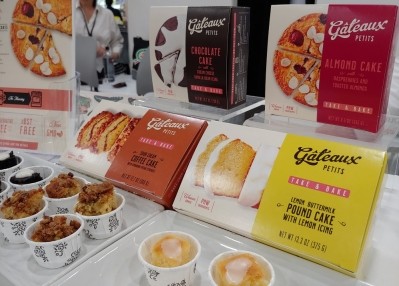Summer Fancy Food Show
Consumers want cleaner-label, better tasting gluten-free options in more categories
This content item was originally published on www.foodnavigator-usa.com, a William Reed online publication.
“Ten years ago, [when] you heard about gluten-free, it was in terms of Celiac disease and people who were worried about allergies, and that need still exists, but … the need has evolved and changed over the years. A new shopping demographic has emerged, and that is the better-for-you shopper – that gluten-avoider who can eat gluten, but also wants to control their gluten consumption for a variety of reasons,” Michael Fricchione, VP of sales, Andriani Spa which makes gluten-free pasta brand Felicia, told FoodNavigator-USA.
He explained that 60% of shoppers who buy gluten-free also buy products with gluten in them, and they are making purchase decisions based on nutrition.
That is why all of Felicia’s gluten-free pastas are organic, “extremely high in protein and fiber,” and many offer high amounts of minerals, like magnesium, and different levels of vitamins depending on the ingredient base, which range from chickpea and lentil to oat, brown rice, buckwheat and more, he said.
Felicia is also innovating to bring new ingredients and flavor profiles to the gluten-free space.
For example, the company highlighted at the Fancy Food Show its new spirulina pasta, which is “produced with a circular economy,” Fricchione said. “We actually use the wastewater from the pasta production to grow the spirulina ourselves, and then we use that spirulina in the pasta production for our spirulina pasta.”
The company also offers a buckwheat pasta, which is one of the new top trends for 2024, he added.
Wanted: Cleaner ingredients, taste the whole family will love
As the variety of gluten-free products increases, consumers are raising the bar for quality and seeking options with cleaner ingredients, better nutrition and taste and texture that more closely aligns with those of their conventional counterparts.
“Part of our mission is to change the perception that gluten-free cookies and bars are like cardboard,” by creating cookies that are “delicious” and which “everybody can really enjoy,” said Andrea Uribe with Josephine’s Baking Co.
To make the cookies more appealing to a broader audience, she said, the company also uses clean ingredients and skips ingredients that some consumers do not want – like gums, artificial flavors and colors and “bad oils.”
Startup Tempo Granola is also focused on creating a gluten-free option that is healthier and made with only recognizable ingredients – most of which can easily be found in consumers’ kitchens, said Beverly Karns, company founder and CEO.
“Tempo Granola is a better-for-you, healthy granola, and I know that sounds like an oxymoron when you talk about healthy and granola in the same sentence. But what we are trying to do is … put it back in the healthy category for protein packed, low in sugar and then we put a prebiotic in there to get our guts doing the digestion our belly should be doing,” she said.
She also stressed the importance of gluten-free certification, which can increase the cost of goods, but for which most consumers will happily pay.
She explained that when she samples her product she often asks if they are willing to pay 15% more and they almost always agree that paying a slightly higher price is worth a higher quality, safe product.
A dedicated retail section for gluten- and allergy-free simplifies shopping
Because reading labels for nutrition and allergen information takes time, the marketing team behind Mrs. Crimbles' “gloriously gluten-free” coconut macaroons urges retailers to create dedicated sets where consumers can find products that are allergen-free or tailored to specific diets.
“We think that having a separate shelf is much easier for the consumer to navigate. … Historically these products are just around the main shelf, but if you have gotten an allergy to gluten and you have very little time to do your shopping, you don’t really want to be having to check all the labels” to find a gluten- or allergy-free option, said Caroline Rose, senior marketer for Ecotone, which makes Mrs. Crimbles and Clipper Tea.
White space remains for craveable, comforting options
Looking forward, Whoa Dough Founder Todd Goldstein says there is still plenty of room for innovation and he encourages entrepreneurs to think about the foods they love and crave and make allergen-friendly versions that meet or exceed consumers’ taste and texture expectations.
“When I think about innovation, I think about … what I missed the most” after adopting a gluten-free diet and having more restricted choices, Goldstein said. For him, that was the cookie dough and brownie batter he would lick from the bowl as a child.
“We are filling the space by having ready-to-bake cookie dough that you could eat raw or back into a delicious chocolate chip or sugar cookie,” but which is gluten-free and packed with protein and fiber from the chickpea and oat base, he said.








